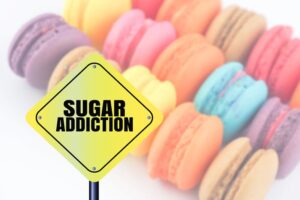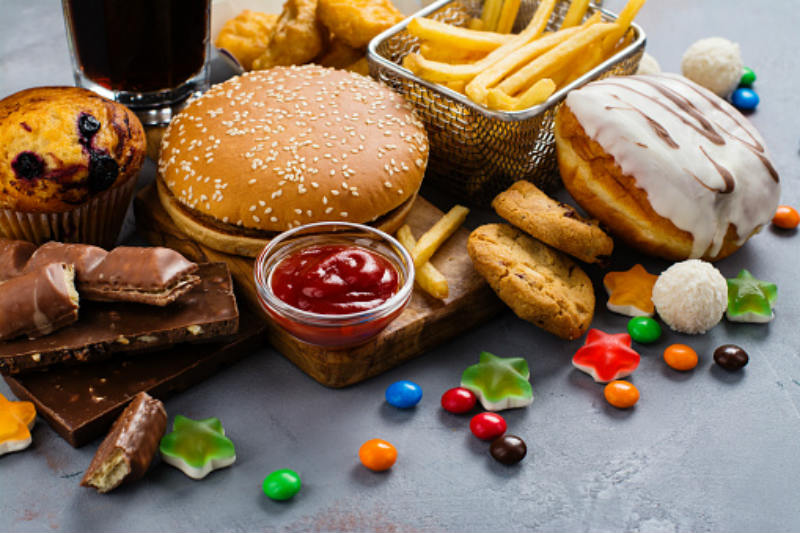Similarities Between Junk Food, Sugar and Abusive Drug Addiction
Junk food can be found almost anywhere today. Unfortunately, the same goes for abusive drugs as well. You must have heard that many people claim that junk foods and sugar are as addictive as drugs. After all, there are so many myths around related to nutrition, weight loss, and addiction, that it becomes difficult to understand what is the truth. But the fact remains that there are some disturbing similarities between junk food, sugar, and abusive drugs. Read on to find out what these similarities are.
Similarities Between Junk Food, Sugar and Abusive Drug Addiction
Role of Dopamine in Both Junk Foods, Sugar and Drugs
Eating is essential for our survival. When we have food, the hormone dopamine gets releasein a part of the brain, as the reward system. The brain hormone dopamine is a neurotransmitter that is responsible for pleasure, motivation and learning in the body. Once dopamine release, the brain receives the ‘pleasure’ signal, which changes the programming in the brain to make us feel pleasure or happy.
This is one of the ways in which the brain motivates us to keep working towards our goals. Without dopamine, our lives would be very unhappy and miserable.
However, with the advancements of technology, there are many things today that can flood our brain with dopamine. These levels of dopamine are much more than our brain use to, which can lead to the brain pathways, getting overwhelmed by the intense level of dopamine.
For example, when people take cocaine, it immediately floods the brain with dopamine. This causes the brain to change its programming, ultimately resulting in wanting more and more cocaine to feel happy at that same level.
However, in a world full of highly processed junk foods and sugary foods, studies have found that sugar and processed junk foods both have the same effect as cocaine or other abusive drugs on the brain and the release of dopamine.
Sugar and junk foods can be referred to as ‘superstimuli,’ which flood the brain with so much dopamine that we feel unsatisfied with regular food afterward.
This is not just an assumption made by doctors. The fact that sugars and processed foods function like abusive drugs and have the same effect on our brain as cocaine and other drugs has been proven in numerous studies. These studies found that sugar and junk foods end up flooding the reward center of the brain with dopamine. These foods especially affect an area in the brain known as nucleus accumbens, which play a huge role in addiction. This region is located in the basal forebrain and there is a nucleus accumbens present in each hemisphere of the brain.
Sugar is also said to have the same effect on opioid pathways in the brain. The opioid pathways are the same brain system that is manipulated by the intake of drugs like morphine and heroin.
This is the reason why a regular intake of highly processed junk foods. And sugary foods can make some people lose control over how much of the foods they are having. Similar to drugs of abuse, these foods end up ‘hijacking’ the brain’s pleasure pathways, making the body want more and more of the same sensation.
Sugary and Junk Foods Lead to Cravings
We are all well verse in those midnight cravings for having sugary foods or junk foods. While most people tend to confuse cravings as feelings of hunger, the two are not at all the same thing.
While hunger cause by many physiological signals that are dependent on the body’s need for nutrients and energy. Cravings are have nothing to do with fulfilling the body’s need for energy and nutrients.
Cravings again satisfy the brain’s reward center. It can be said, thus, that the brain drives your body towards this opioid or dopamine signal, which is why you feel a craving to have junk or sugary foods.
Cravings for junk foods are the same as cravings for drugs of abuse, cigarettes, alcohol, and other addictive items. The thought processes and obsessive nature behind both types of cravings find to be identical.
Identical Biological Response in the Brain with Junk Foods and Drugs
Researchers use devices known as functional MRI scanners to track the changes taking place in blood flow to certain areas in the brain. Blood flow is directly link to the activation of particular neurons. Due to this, researchers can use functional MRI scanners to measure which parts of the brain get activate.
Using functional MRI scanners, craving for both junk food and drugs of abuse light up or activate the same part of the brain. In fact, one of these animal studies even found that rats can also become addicted to having certain foods. Similar to drug-addicts, the brain may also predispose obese people to seek food as a reward.
Same Tolerance Development in Junk Foods and Drugs of Abuse
When we eat sugary and highly processed junk foods, our brain gets flood with dopamine. In order to counteract this, a protective mechanism gets triggered by the body. The brain then automatically starts to reduce the number of dopamine receptors. It has to keep things under control and in balance.
This process, known as downregulation, helps us develop a tolerance to these foods. The same process knows to happen in the brains of drug addicts. This ultimately causes people to require larger and larger doses of the drugs as the brain keeps on decreasing the number of dopamine receptors.
The same evidence also applies to the intake of junk food and sugar. This is why people addict to foods may end up eating huge amounts beyond their average consumption in a single sitting.
At the same time, this also shows that food addicts of junk food may not even be deriving pleasure from eating. Because the brain already reduce its dopamine receptors as a response to the constant overstimulation of dopamine.
When the brain’s reward system gets frequently overstimulate, it responds by cutting back on the number of dopamine receptors. This builds up tolerance in the body, which is one of the critical hallmarks of addiction and is common to food addiction as well.
Binging on Foods and Drugs
Once tolerance starts building up, drug addicts will start increasing their dosage. So when in the past they used to take just one pill, they will now resort to taking two pills to achieve the same high. Soon it will increase further.
Since due to tolerance, there are now lesser dopamine receptors in the brain. Addicts will need to take a larger dose to reach the same level of euphoria. This is also the reason why many people start binging on junk foods.
Binge eating is a common feature of food addiction and other eating disorders as well. Animal studies have found that rats will binge on delicious junk foods in which they binge on addictive drugs.
Conclusion
There is no real way to measure addiction. There is no specific blood test or urine test that can determine whether a person addict. Doctors diagnose addiction based on a pattern of behavioral symptoms. There is really no difference between food addiction and drug addiction. Only the substance of abuse changes, and the social consequences of food addiction are not as severe as drug addiction. Nevertheless, the biological responses in the brain are exactly the same for both types of addiction. And these similarities help prove the same.




